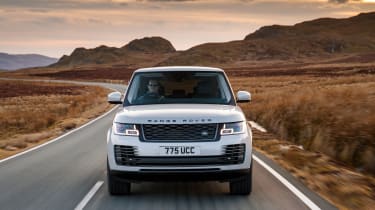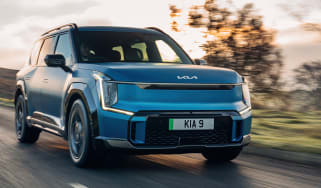Range Rover PHEV (2018-2022) review
Driving in electric mode, the Range Rover PHEV is even more relaxing than the conventionally powered versions of the SUV
Pros
- More luxurious than standard car
- Fantastic driving position
- Great performance
Cons
- Expensive to buy
- Poor economy on longer drives
- Other PHEV SUVs have lower BiK
| Car type | Electric range | Fuel economy | CO2 emissions |
|---|---|---|---|
| Plug-in hybrid | 24-25 miles | 76-85mpg | 77-87g/km |
The Range Rover PHEV will go down in history as the first plug-in hybrid from the company. However, it’s certainly not the first luxury SUV with this technology. The Volvo XC90 T8 does much the same job – and for quite a bit less money. The PHEV is powered by the combination of a 2.0-litre petrol engine and an electric motor, which produce a total of 399bhp. That’s enough for a 0-62mph time of 6.4 seconds, a claimed 85mpg fuel economy and impressive CO2 emissions of as little as 78g/km.
For such a luxury vehicle, company car tax is also relatively affordable but there are many far cheaper premium plug-in hybrid SUVs including the BMW X5 and Volvo XC90. While the Range Rover's CO2 seems low for such a big, lavish car, ultimately they're not very good next to the competition and the company car costs are comparably high as a result. On electric power, the PHEV has a range of 24-25 miles and you can charge it fully from flat in just over two hours from a wallbox. Above all, running the car on the electric motor really suits it. Driving around in near silence enhances the luxurious feeling you get in a Range Rover.
Only trouble is, the car’s 2.0-litre four-cylinder engine can be noisy when it kicks in, and it’s not as nice a noise as the V6 and V8 engines you get elsewhere in the range. As a result this is not the best Range Rover for longer journeys. In fact, this Range Rover is at its best in the urban jungle, where the electric power really comes into its own. Not only will it whisk you around the city quickly and with very little apparent effort, it will help to make it remarkably cheap to run. Well, cheap for a Range Rover, that is.
Like all Range Rovers, its strongest suit is its comfort. That comes courtesy of air suspension, which has neat trick up its sleeve: dropping down to make it easier for passengers to get in and out, and for luggage to be loaded and unloaded. Of course, the sheer size of the interior helps, too. And, whether you’re in the front or back, you’ll be enjoying one of the most luxurious off-roaders in the business. Yes, the boot is a little smaller than in other Range Rovers, to allow room for the hybrid system’s batteries, but it’s still pretty big.
Last, but not least, although this is a very expensive car – albeit not when compared to other Range Rovers – you get a lot for your money. There are several trims to choose from and all are well equipped. Even the most basic comes with air suspension, sat nav, leather, three-zone climate control and a Meridian stereo.
Vogue SE – which is the best value – upgrades to the more advanced Terrain Response 2 system, as well as adding several extra safety systems, while Autobiography is even more plush. The SVAutobiography Dynamic is as luxurious as you'd expect of the flagship Range Rover.

Overall, the Range Rover PHEV is a tricky car to sum up. On the one hand, it’s one of the cheapest models in the Range Rover line-up to run – as long as your motoring lifestyle suits it – but on the other, there are quite a few cheaper hybrid SUVs that are more economical, more practical and cost less as a company car.
Even so, apart from the even more expensive Bentley Bentayga Hybrid, this Range Rover is in a class of its own in terms of the luxury and driving experience it offers. That means it’s certainly worth a look if you’re after a high-class hybrid SUV. For a more detailed look, read on for the rest of our in-depth review...



